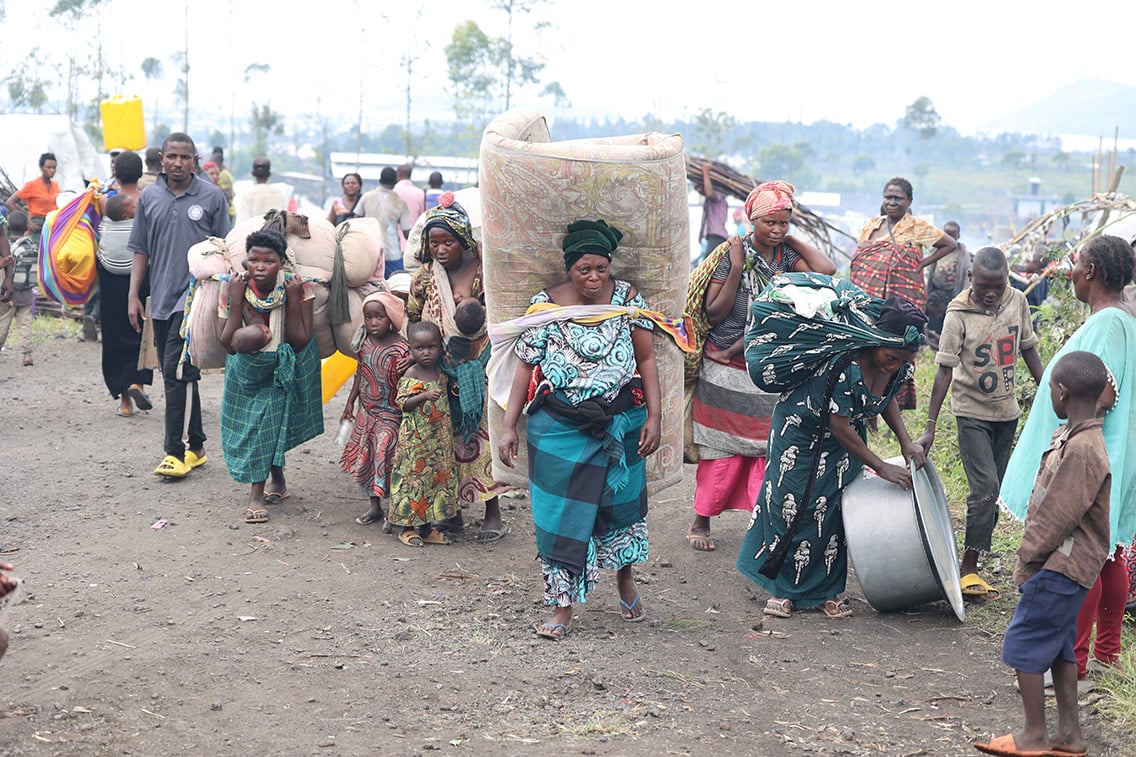Ugandan settlement struggles to accommodate new arrivals from DRC
Ugandan settlement struggles to accommodate new arrivals from DRC

KYAKA II SETTLEMENT, UGANDA: In just one month, the population of Kyaka II, a permanent settlement for Congolese refugees in Uganda, has grown by more than 50 per cent. Twenty-six new arrivals were registered this week - the latest group to be transferred by the UN refugee agency from two locations along Uganda's western border - bringing the overall population to more than 12,500 people.
Some 20,000 refugees have fled the eastern regions of the Democratic Republic of the Congo (DRC) since late December. The biggest influx took place in the first two weeks of January, when around 10,000 people crossed Lake Albert from DRC to take refuge in Ishasha, in Uganda's Hoima District. They told UNHCR they were fleeing fighting between the Hema and the Lendu, two rival ethnic groups in DRC's north-eastern province of Ituri. Further south, across Lake Edward, which marks the border between the two countries, another group of Congolese refugees fled fighting in north-Kivu to take refuge in Uganda.
Since then, refugees have been trickling through to Uganda on an almost daily basis. Although about 7,000 of them have subsequently chosen to go back to their homes in DRC, UNHCR has since mid-January helped move more than 4,300 to Kyaka II settlement, some 280 kilometres west of the Ugandan capital Kampala. The settlement was already home to about 8,000 refugees, and an enormous effort was needed to accommodate the newcomers.
Providing Kyaka II with water has been UNHCR's biggest challenge. Even before this new influx, the settlement - like the rest of the region - had an insufficient supply. UNHCR's partner agency Oxfam provided vital technical help during the emergency period, but major concerns remain. Today, water is still being trucked to the settlement from a nearby dam, a solution that is expensive to carry out in the long term and made all the more difficult by the poor state of the roads.
The opening of a bridge early this week between the Mukundo reception centre and Kyaka II will help improve access to the settlement. For the time being, only light vehicles can cross. Trucks will not be allowed to use the bridge until its sides have been reinforced.
Distribution of monthly food rations for the newcomers also started this week. In order to ensure that everyone receives their food, the rations were handed out directly to each family. Recently-arrived refugees were also given plastic sheeting, kitchen sets, blankets, jerry cans, soap and agricultural tools.
Many of the refugees arrived in Uganda in very poor health, and the clinics around Kyaka have been working seven days a week to cope with the demand for their services.
The 50 per cent population increase is also putting enormous pressure on the settlement's three schools, already stretched before the recent arrivals. More than 1,500 of the newcomers are of school-age (between 5 and 17), and class sizes have now jumped to an average of 126 pupils each. The 57 teachers who work in Kyaka II say they can no longer cope - each of them is currently responsible for 55 students. To answer the growing needs, UNHCR will build two new primary schools with 18 additional classrooms, and hire 32 extra teachers.
Like other settlements in Uganda, Kyaka II is part of the national "Self-Reliance Strategy" programme, under which the government hands out large plots of land for use by the refugees. The refugees themselves then build houses, roads, schools and clinics, with material and technical guidance provided by UNHCR and its partners on the ground. UNHCR also constructs roads, clinics and other infrastructures which benefit both the refugees and their host communities.
By Marie-Hélène Verney








